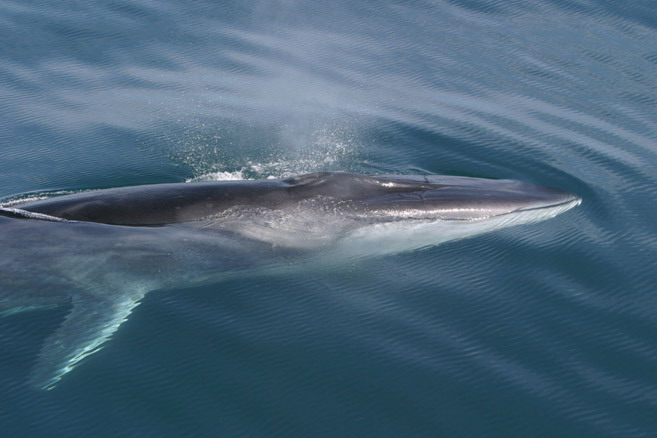This post has been updated with comments from the National Oceanic and Atmospheric Administration.
In all likelihood, the fin whale now rotting on a beach in Burien was dragged into the Puget Sound on the bow of a boat.
And while fin whales are endangered, there likely won’t be much effort put toward tracking down the vessel that proved to be the undoing of the 65-foot behemoth, a government spokesman said Tuesday.
“There really isn’t a hell of a lot you can do, in part because the people on the ship itself are almost certainly unaware they have struck a whale,” said Brian Gorman, spokesman for NOAA’s Marine Fisheries Service. “It’s not uncommon where a container ship will come into port with a whale across its bow, and the first people to see it are on land.”
Biologists have long been focused how shipping routes could be modified to prevent whale strikes in the future — an effort that could be aided by more data on when and where whale strikes occur.
“Ship strikes are a growing concern with whales, there is a lot of action trying to change shipping lanes,” said John Calambokidis, a research biologist with Cascadia Research Collective, who emphasized that things were still pretty much in speculation mode and that he was speaking on behalf of himself and not the federal government. “A strike would not involve individual negligence… The main changes that are needed are changes to shipping lanes.”
While criminal prosecution may not be called for, Calambokidis said it would be “extremely scientifically valuable” to track down more about how the whale’s death came about.
“To know the ship, where the strike occurred, and the speed the strike occurred at – that would be very helpful,” he said.
But An investigation to determine those factors would be atypical on the west coast, Gorman said.
That’s in large part because fin whale populations are fairly healthy, despite their endangered status.
“ It certainly hasn’t reached the level it has on the East Coast where you have whales in real danger of becoming extinct,” he said, referring to the right whales, only 300 of which still exist.
Calambokidis said between 3,000 and 4,000 fin whales live off the American west coast, a recovering population that is faring better than their big cousins, the blue whale.








